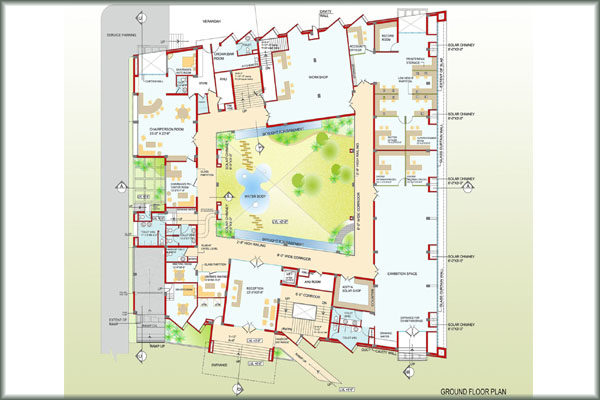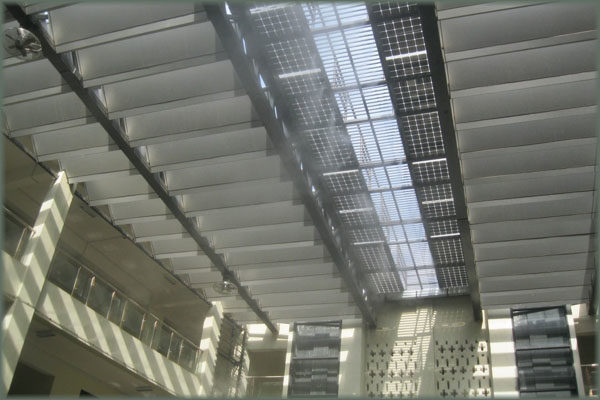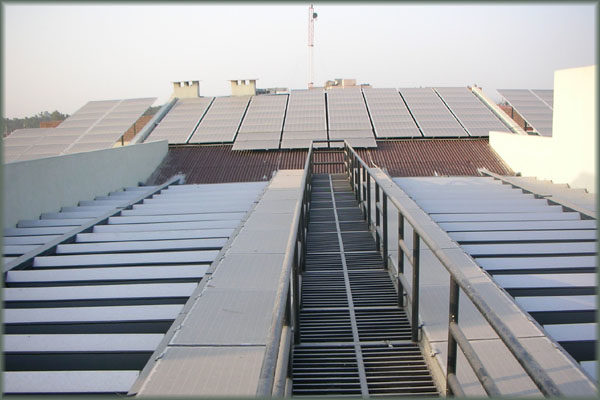Akshay Urja Bhawan, HAREDA
Renewable Energy
Building Integrated Photovoltaic(BIPV) System with 42.50 kW capacity to supply total annual energy consumption.
SOME ADDITIONAL FACTS
- HAREDA energy consumption <15 kWh/m2/year
- Energy required by HAREDA 62,415 kWh
- Energy production from solar PV 67,343 kWh
- Excess energy produced 4,928 kWh
- CO2 Credits 308 tonnes/year
- Total connected load for internal lighting = 5 kW
- Total connected load for space conditioning = 55.310 kW
- Total built up area of 55,000 sqft has a connected load of 125 kW which amounts to 2.27 W/sqft.
- The total simulated energy consumption in the building was13.5 kWh/m2/year compared to a conventional building of 140 kWh/m2/year.
- Air conditioned area = 477 m2. Energy consumption intensity of air conditioned areas is 39 kWh/m2/year.
- Non air conditioned area = 3637 m2. Energy consumption intensity of non air conditioned area is 7.17 kWh/m2/year.





